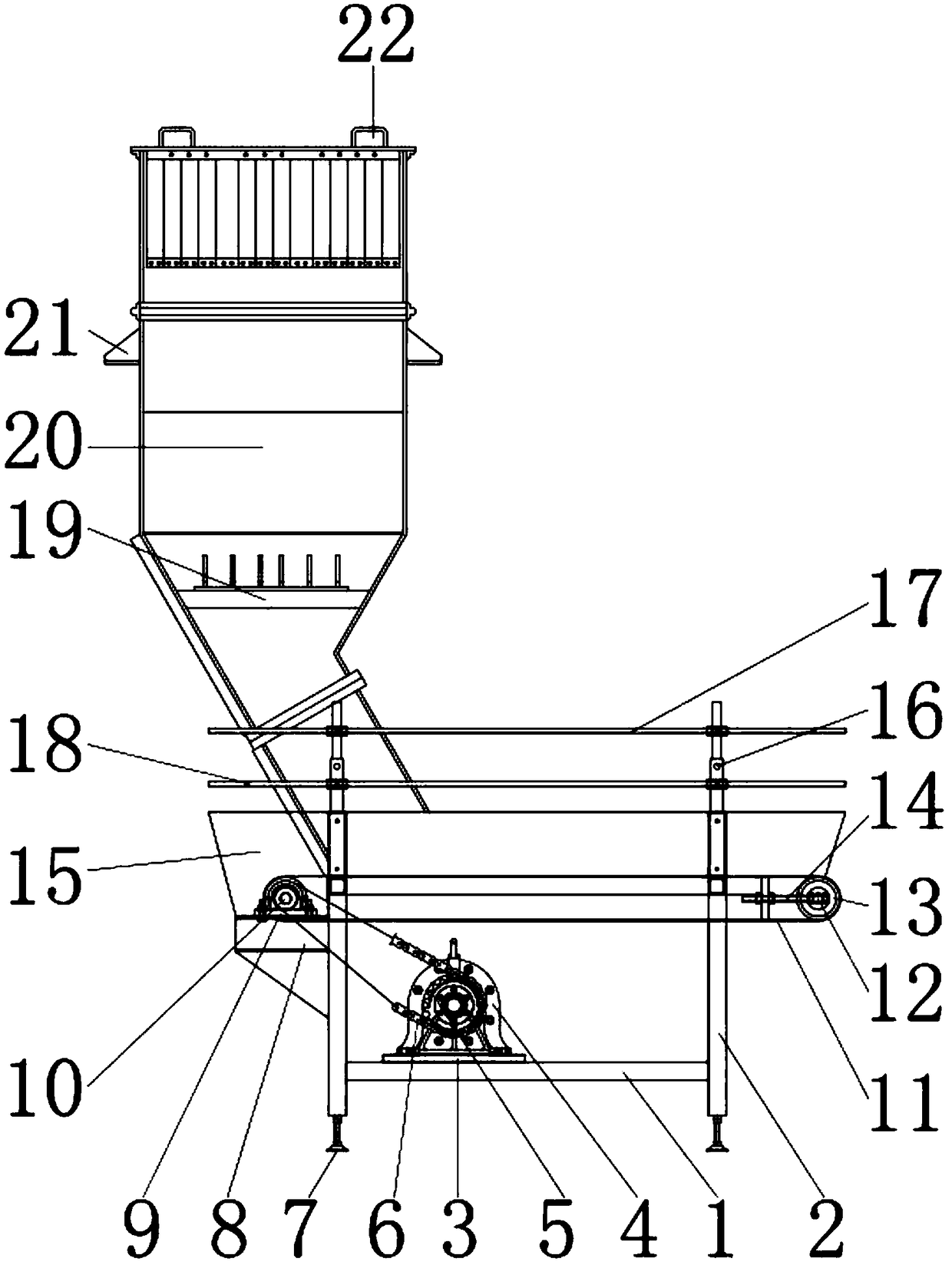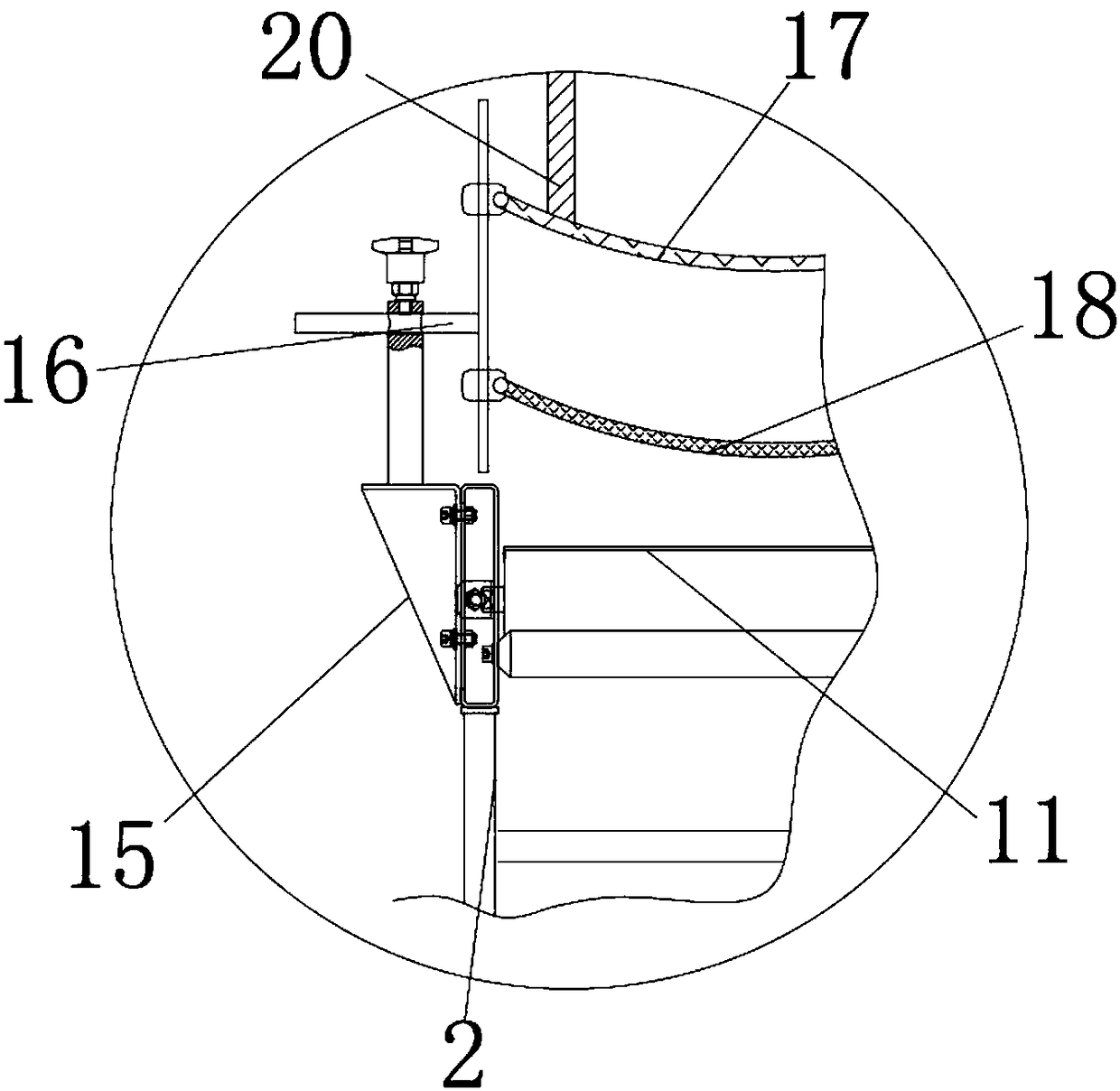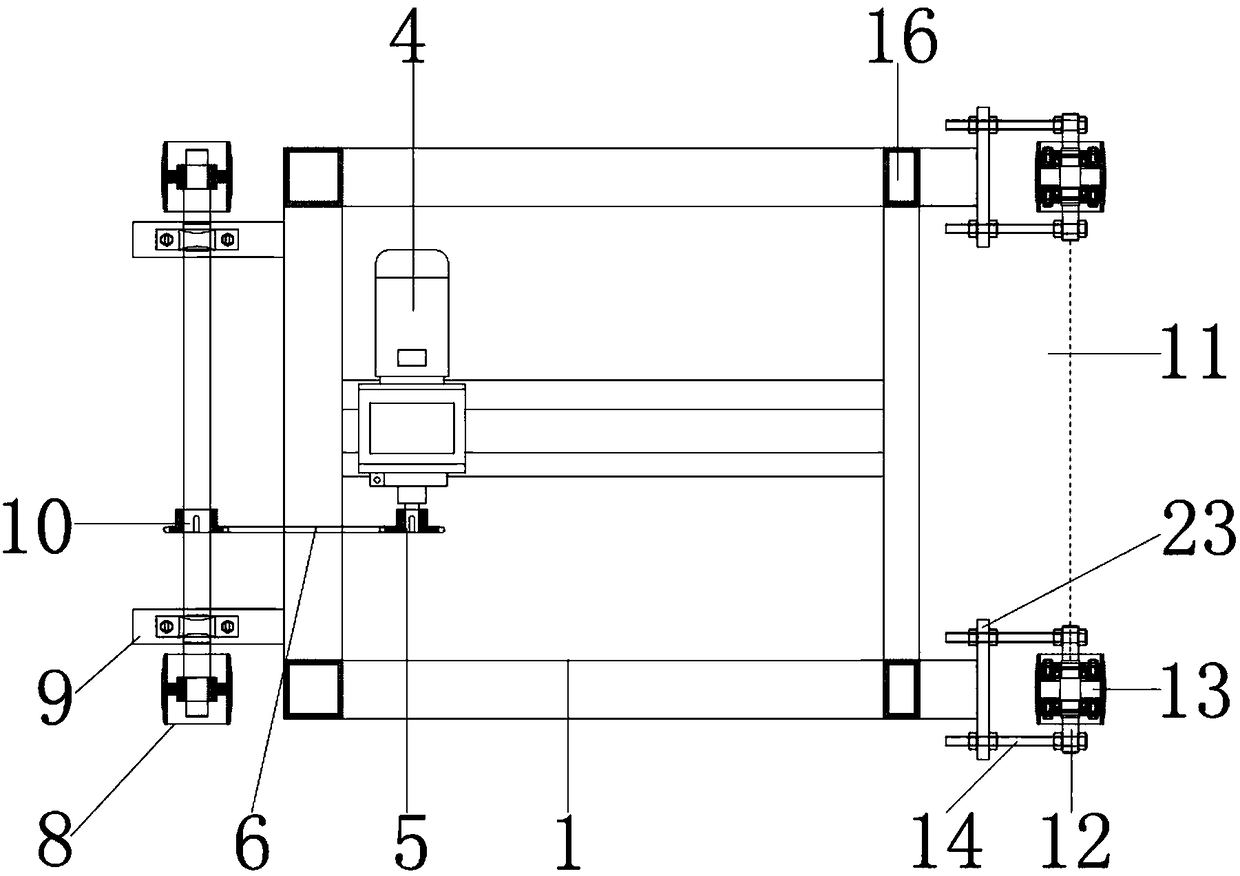Food detection conveying belt with automatic screening function
A technology for food detection and automatic screening, which is applied to conveyors, conveyor objects, and the separation of solids from solids by airflow, which can solve problems such as increasing detection costs, affecting detection work, and only giving detection results. Achieve the effect of improving delivery efficiency, improving screening efficiency and improving product quality
- Summary
- Abstract
- Description
- Claims
- Application Information
AI Technical Summary
Problems solved by technology
Method used
Image
Examples
Embodiment Construction
[0020] The following will clearly and completely describe the technical solutions in the embodiments of the present invention with reference to the accompanying drawings in the embodiments of the present invention. Obviously, the described embodiments are only some, not all, embodiments of the present invention. Based on the embodiments of the present invention, all other embodiments obtained by persons of ordinary skill in the art without making creative efforts belong to the protection scope of the present invention.
[0021] see Figure 1-4, the present invention provides a technical solution: a conveyor belt for food detection with automatic screening function, including a box body 1, the box body 1 is made of stainless steel, and is used to install and fix the motor 4, and the inner wall of the box body 1 is equipped with legs 2. It is used to install the vertical plate 15. The lower surface of the leg 2 is equipped with a foot 7. When used, the connection between the leg...
PUM
 Login to View More
Login to View More Abstract
Description
Claims
Application Information
 Login to View More
Login to View More - R&D
- Intellectual Property
- Life Sciences
- Materials
- Tech Scout
- Unparalleled Data Quality
- Higher Quality Content
- 60% Fewer Hallucinations
Browse by: Latest US Patents, China's latest patents, Technical Efficacy Thesaurus, Application Domain, Technology Topic, Popular Technical Reports.
© 2025 PatSnap. All rights reserved.Legal|Privacy policy|Modern Slavery Act Transparency Statement|Sitemap|About US| Contact US: help@patsnap.com



